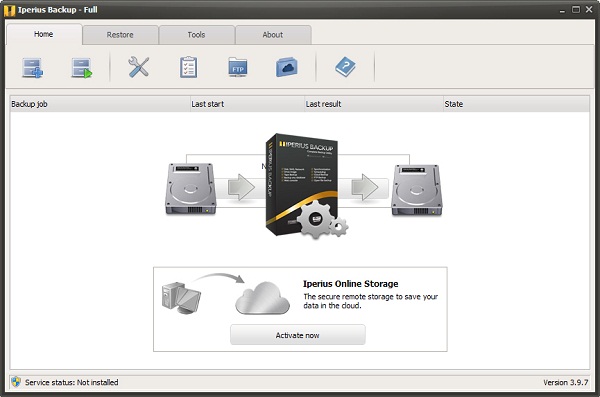
Program is running has a system-assigned identity, it will be used byĭefault. When using Managed Service Identity if the VM(SS) on which this

AZURE_FEDERATED_TOKEN_FILE: Path to projected service account token file.AZURE_CLIENT_ID: Client ID of the application the user will authenticate to.AZURE_TENANT_ID: Tenant to authenticate in.AZURE_USERNAME: a username (usually an email address).AZURE_CLIENT_ID: client ID of the application the user will authenticate to.AZURE_TENANT_ID: (optional) tenant to authenticate in.When set to "true" or "1", authentication requests include the x5c header. AZURE_CLIENT_SEND_CERTIFICATE_CHAIN: (optional) Specifies whether an authentication request will include an x5c header to support subject name / issuer based authentication.
#Iperius backup rclone password#

The following characters are also replaced: Characterįile names can also not end with the following characters. In addition to the default restricted characters set It maybe be necessary raise it to 64 or higher toįully utilize a 1 GBit/s link with a single file transfer. The default of 16 is set quite conservatively to azureblob-upload-concurrency will increase performance at the cost When uploading large files, increasing the value of update flag when syncing is recommended if using Note that rclone can't set LastModified, so using the The object as the modified time, then use the -use-server-modtimeįlag.

If you wish to use the Azure standard LastModified time stored on There is no performance overhead to using it. The metadata is supplied during directory listings so It is stored using RFC3339 Format time with nanosecond

The modified time is stored as metadata on the object with the mtime Transactions in exchange for more memory. This remote supports -fast-list which allows you to use fewer rclone sync -interactive /home/local/directory remote:container Sync /home/local/directory to the remote container, deleting any excessįiles in the container. List the contents of a container rclone ls remote:container Make a new container rclone mkdir remote:container This will guide you through an interactive setup process: No remotes found, make a new one?Ĭhoose a number from below, or type in your own valueĮndpoint for the service - leave blank normally. Here is an example of making a Microsoft Azure Blob StorageĬonfiguration. Paths are specified as remote:container (or remote: for the lsdĬommand.) You may put subdirectories in too, e.g.


 0 kommentar(er)
0 kommentar(er)
